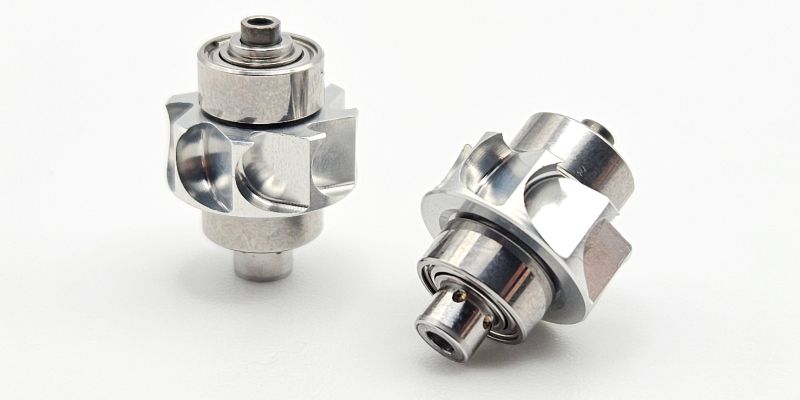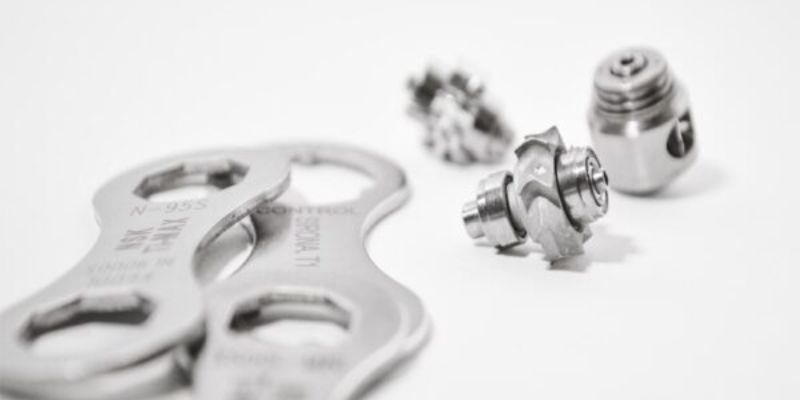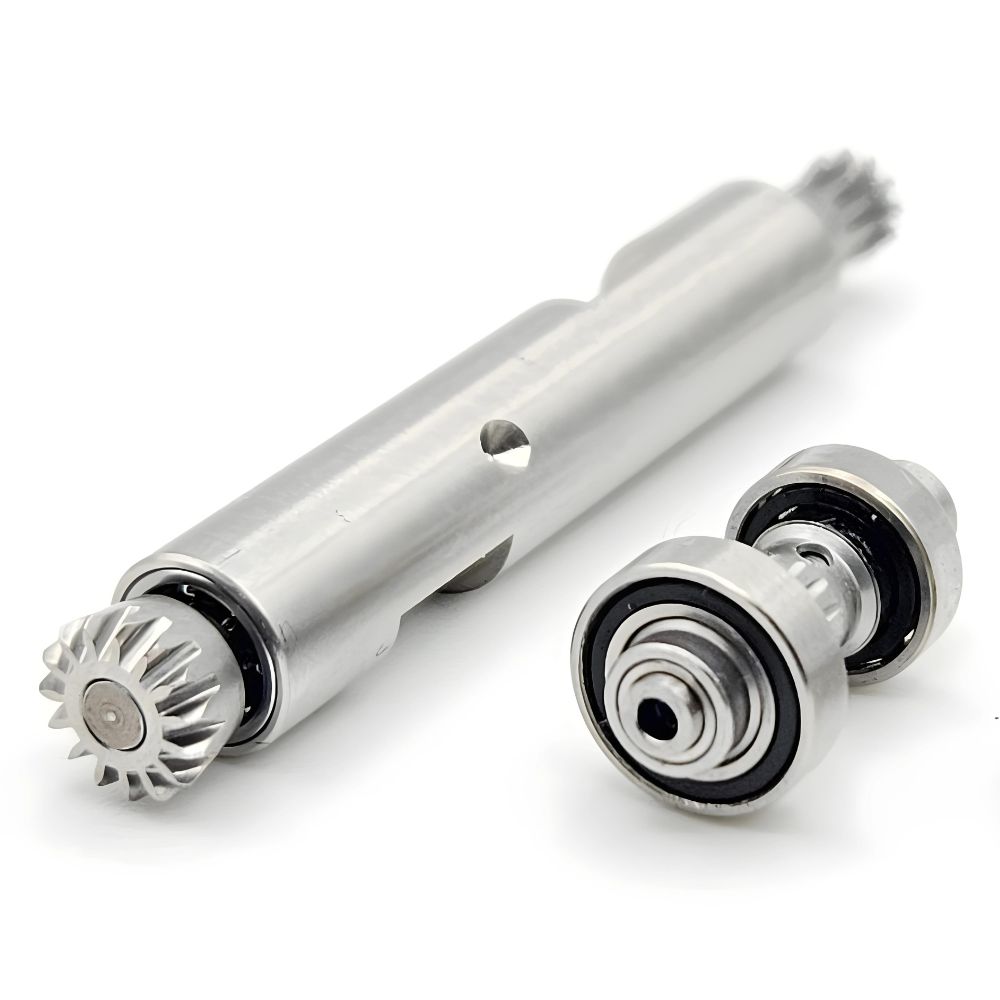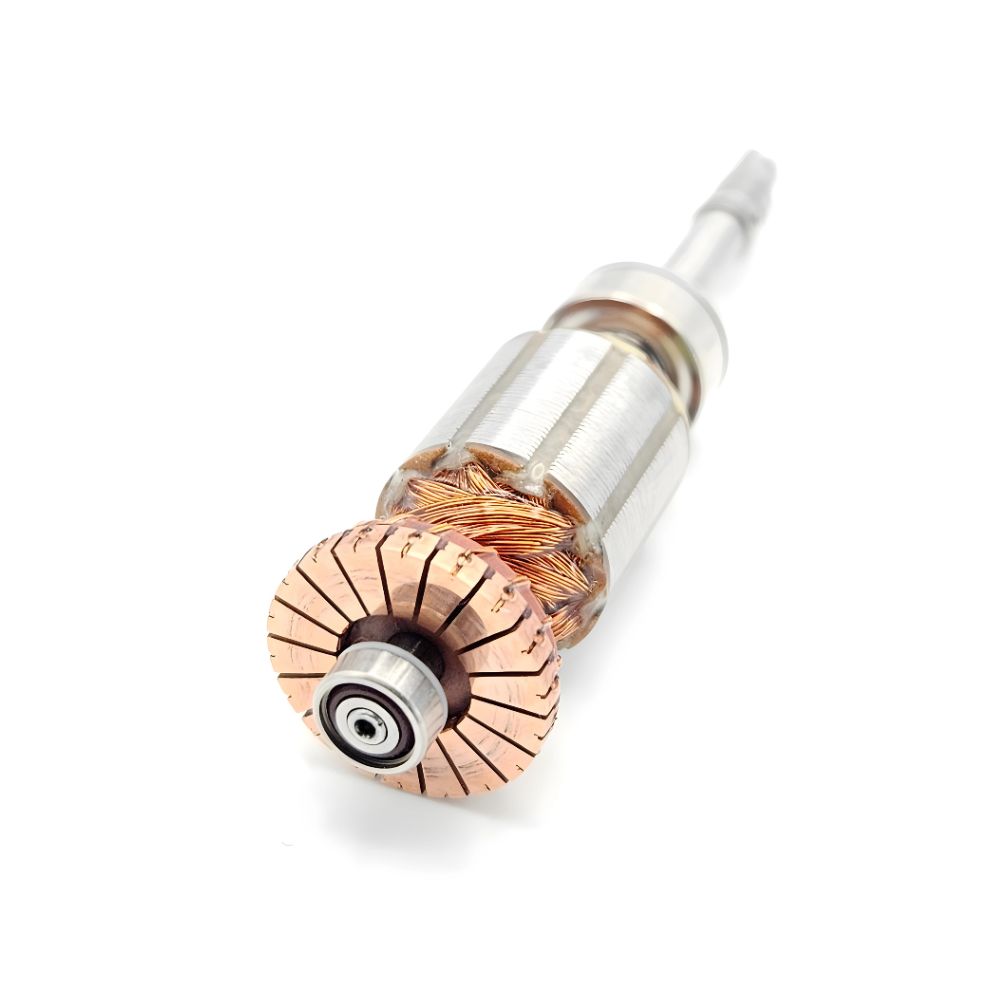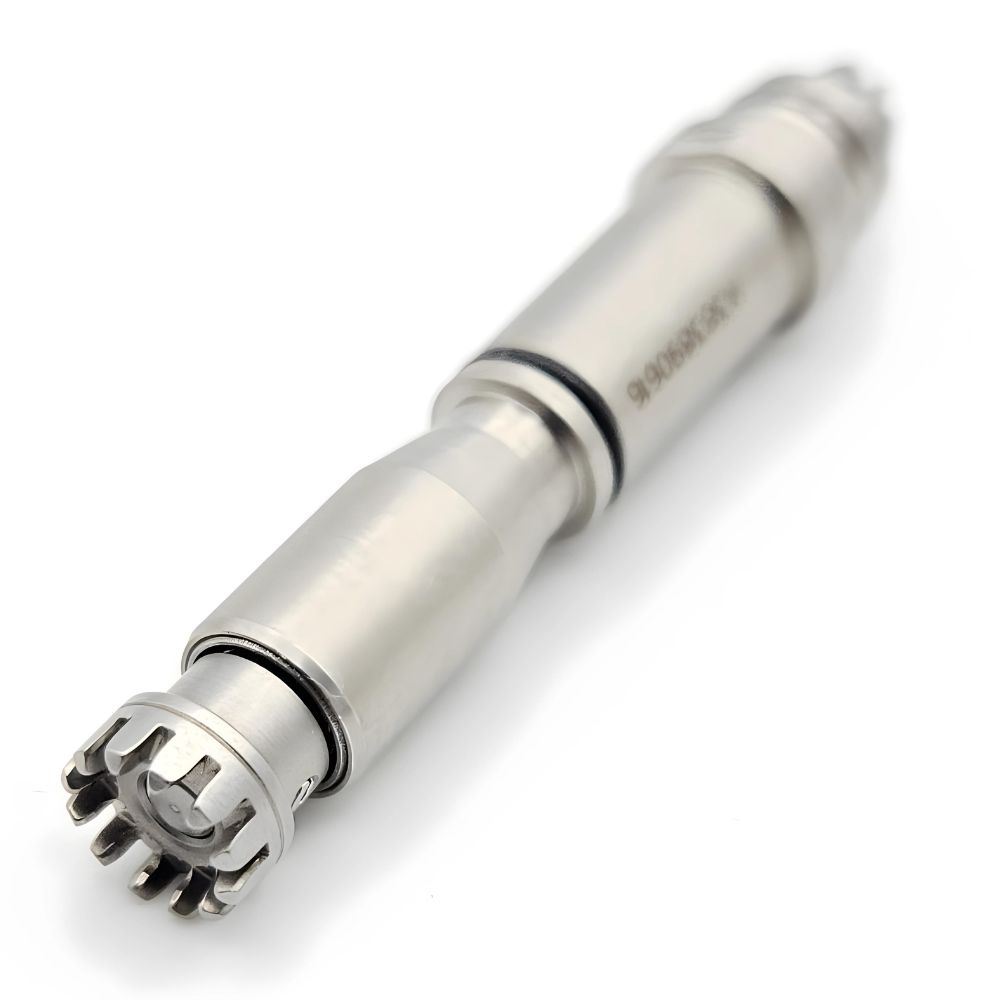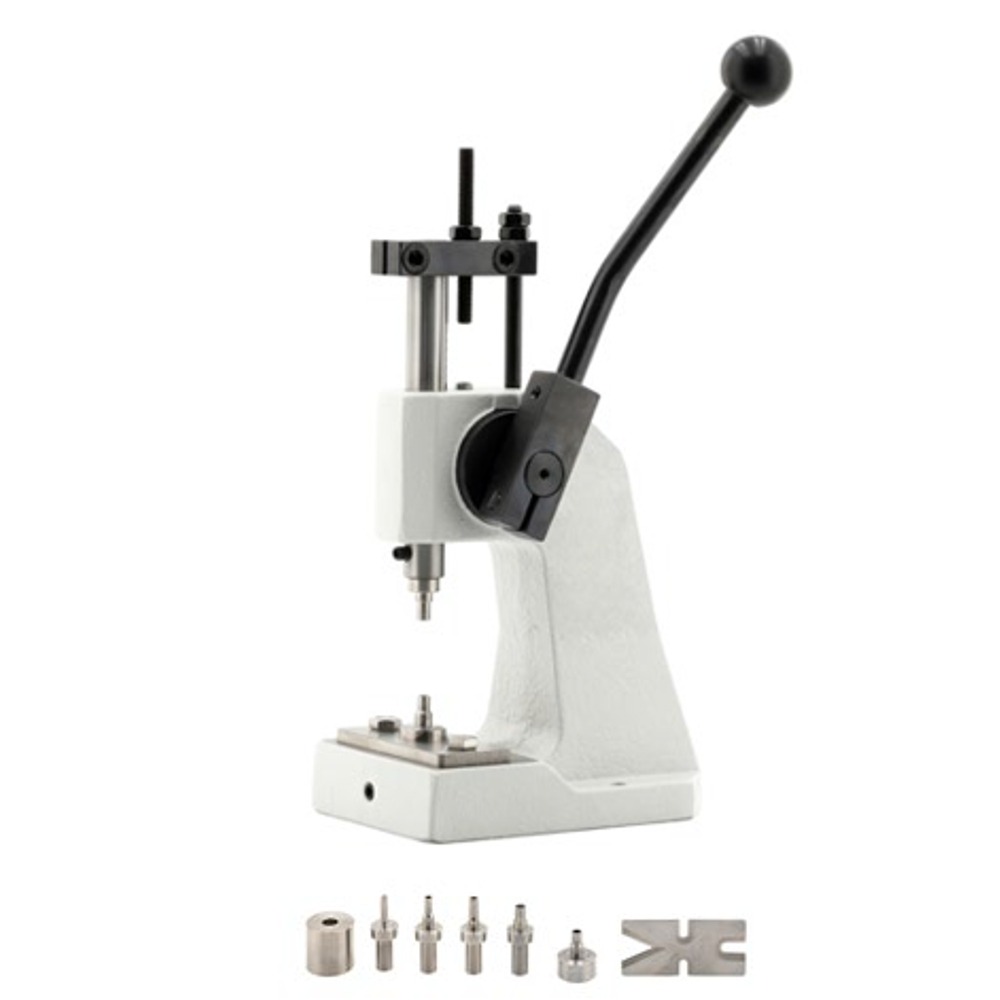Cuscinetti per manipoli dentali MYONIC
Kit di cuscinetti a sfera per manipoli dentali tedeschi. Cuscinetti dentali in ceramica e acciaio di qualità superiore per turbine dentali
100% Autentici cuscinetti a sfera MYONIC tedeschi progettati per produttori europei come KaVo, Sirona, ecc.
I cuscinetti dentali High Precision made in Germany sono microcuscinetti di alta precisione utilizzati per manipoli a bassa e alta velocità. Esteticamente gradevoli e con una rumorosità minima, i cuscinetti dentali sono il sostituto perfetto di parti di bassa qualità e ad alta usura.
Cuscinetti dentali ad alta velocità
I kit di cuscinetti dentali ad alta velocità sono piccoli componenti di precisione utilizzati nei manipoli dentali e in altre apparecchiature dentali che richiedono alta velocità e precisione. I kit sono composti da 2 pezzi e possono variare a seconda del modello di produzione della turbina o del contrangolo. Esistono kit di cuscinetti per manipoli dentali anteriori e posteriori. Questi cuscinetti sono generalmente realizzati in acciaio inossidabile o in ceramica e sono progettati per garantire un basso attrito, una rotazione fluida e un'elevata durata anche quando sono sottoposti alle sollecitazioni di un uso frequente.
Cuscinetti per trapani dentali.
Nelle apparecchiature dentali, i cuscinetti miniaturizzati ad alta velocità sono utilizzati in diverse applicazioni, come manipoli dentali, turbine d'aria e motori elettrici. I manipoli dentali sono utilizzati per forare, molare e lucidare i denti e richiedono una rotazione precisa ed efficiente ad alta velocità. Le turbine ad aria sono utilizzate in alcuni manipoli dentali per fornire velocità ancora più elevate per un taglio preciso ed efficiente, mentre i motori elettrici sono utilizzati in altre apparecchiature dentali per fornire una rotazione fluida e continua.
Nel complesso, i cuscinetti dentali miniaturizzati ad alta velocità svolgono un ruolo cruciale nel garantire la precisione, l'affidabilità e l'efficienza delle apparecchiature dentali, aiutando i dentisti a fornire trattamenti efficaci e confortevoli ai loro pazienti grazie a strumenti rotanti di alta qualità assemblati con kit di cuscinetti per manipoli dentali tedeschi.
Questi piccoli cuscinetti sono il componente chiave di qualsiasi turbina per manipoli dentali. È importante provvedere alla loro manutenzione per mantenere il funzionamento regolare ed efficiente dell'apparecchiatura. Questi cuscinetti in miniatura sono soggetti a usura, soprattutto nella zona del foro, che è parte integrante del corretto funzionamento del manipolo.
I cuscinetti a sfere angolari e i cuscinetti a sfere radiali sono due tipi comuni di cuscinetti a sfere utilizzati in varie applicazioni. Ecco le differenze tra questi due tipi di cuscinetti, nonché i loro vantaggi e svantaggi.
Nel nostro negozio è possibile acquistare autentici prodotti tedeschi Kit di cuscinetti per manipoli dentali
Cuscinetti a sfera a contatto obliquo:
I cuscinetti a sfere angolari sono progettati per supportare carichi assiali e radiali. Questi cuscinetti presentano un angolo di contatto tra le piste interne ed esterne, che consente loro di gestire entrambi i tipi di carico. I cuscinetti a sfere angolari sono tipicamente utilizzati in applicazioni che richiedono elevate capacità di carico assiale e radiale, come i mandrini delle macchine utensili e le applicazioni ad alta velocità. Kit di cuscinetti per manipoli dentali
Tutte le parti rotanti sono assemblate con cuscinetti dentali ad alta velocità MYONIC o GRW.
I cuscinetti a sfere a contatto obliquo, talvolta denominati cuscinetti a mandrino, sono tipicamente utilizzati in unità che richiedono prestazioni e precisione elevate. Questi cuscinetti possono sopportare carichi radiali e assiali. I carichi vengono trasferiti da una pista di rotolamento all'altra attraverso le sfere del cuscinetto lungo un angolo di contatto specificamente progettato; GMN trasmette 15°C, 25° E e altri tipi di angoli di contatto. I cuscinetti a contatto obliquo hanno un grado di velocità molto più elevato rispetto ai cuscinetti radiali a sfere, grazie al contatto costante delle sfere con entrambe le piste di rotolamento.
Vantaggi:
- Possono gestire sia carichi assiali che radiali, il che li rende versatili
- Può gestire velocità e carichi elevati
- Possono fornire un grado di precisione superiore rispetto ai cuscinetti radiali a sfere
Svantaggi:
- Possono essere più costosi dei cuscinetti radiali a sfere
- Richiede un allineamento accurato per funzionare correttamente
- Possono subire un'usura maggiore a causa delle forze più elevate che gestiscono.
Cuscinetti radiali a sfere:
I cuscinetti dentali radiali ad alta velocità sono progettati per supportare esclusivamente carichi radiali. Questi cuscinetti hanno un angolo di contatto di 0 gradi, il che significa che possono gestire solo carichi perpendicolari all'albero. I cuscinetti radiali a sfere sono comunemente utilizzati in applicazioni che richiedono un'elevata capacità di carico radiale, come motori elettrici e pompe.
Vantaggi:
- Sono in genere meno costosi dei cuscinetti a sfere angolari
- Sono più facili da installare e richiedono meno manutenzione
- Può gestire carichi radiali elevati senza subire un'usura eccessiva
Svantaggi:
- Non è in grado di gestire carichi assiali
- Potrebbe non essere adatto per applicazioni ad alta velocità
- Non è in grado di fornire lo stesso livello di precisione dei cuscinetti a sfere angolari.
In sintesi, sia i cuscinetti a sfere angolari che quelli radiali presentano vantaggi e svantaggi. La scelta tra questi due tipi di cuscinetti dipende dall'applicazione specifica e dai requisiti di carico. I cuscinetti a sfere angolari sono più adatti per applicazioni che richiedono capacità di carico assiale e radiale, mentre i cuscinetti a sfere radiali sono ideali per applicazioni che richiedono un'elevata capacità di carico radiale e un costo contenuto.
Cuscinetti a sfera a gola profonda
I cuscinetti radiali a sfere sono un tipo di cuscinetto radiale a sfere, il più utilizzato per la sua versatilità. I cuscinetti radiali a sfere sono utilizzati per trasferire il peso dalle rotazioni delle parti agli alloggiamenti con le perdite di attrito più basse. I cuscinetti radiali rigidi a sfere supportano carichi assiali e radiali in entrambe le direzioni e sono adatti alle velocità più elevate. Uno dei principali vantaggi rispetto ai cuscinetti a sfere a contatto obliquo è che possono sopportare il carico assiale in entrambe le direzioni.

